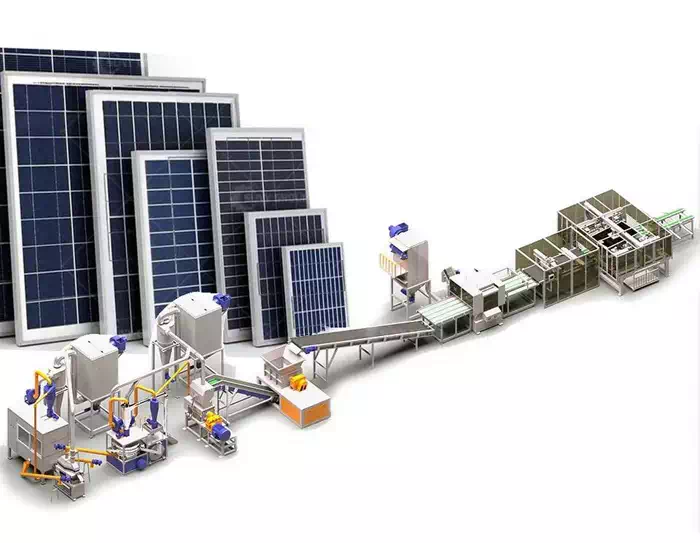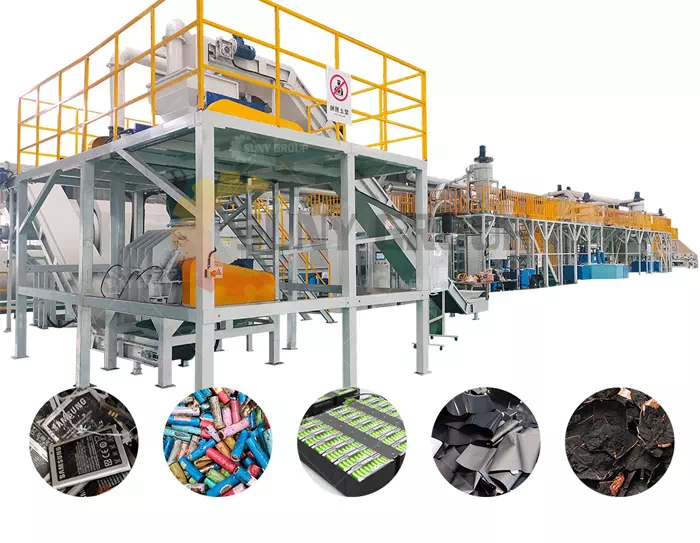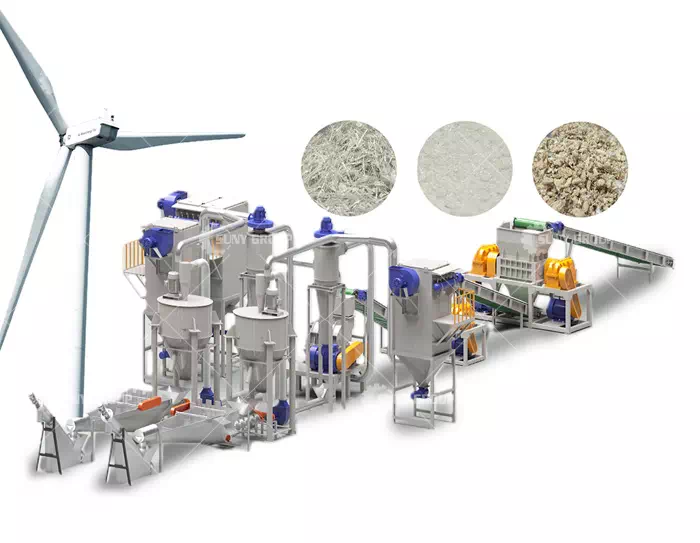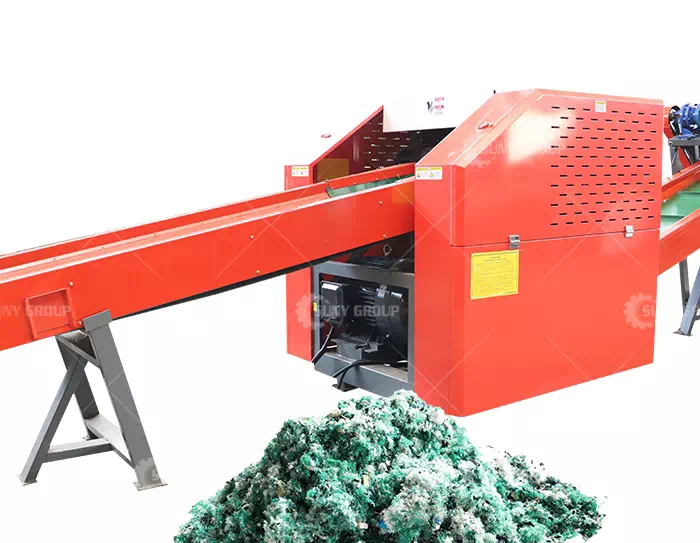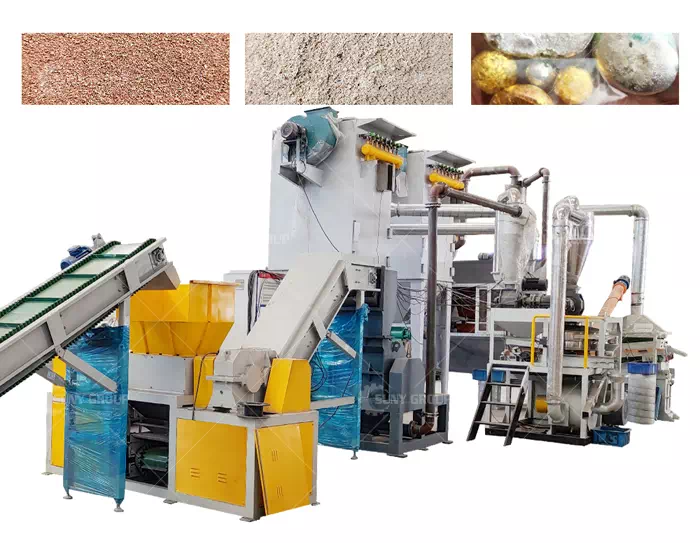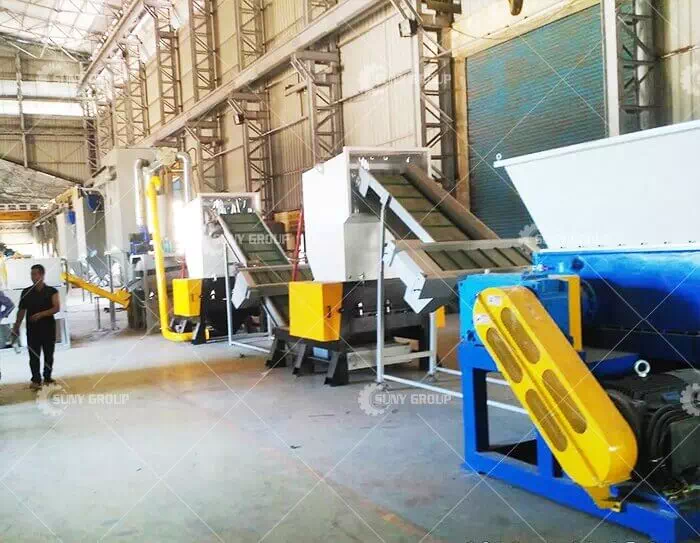Gold Recovery Plant from PCB and Electronics
With the rapid replacement of electronic products, waste electronic equipment (especially printed circuit boards PCB) has become an important part of the urban “mine”. These electronic wastes are rich in precious metals, especially gold, whose content is much higher than that of natural ores. For example, each ton of used cell phone circuit boards may contain as much as 200-400 grams of gold, while conventional gold ores usually contain less than 10 grams of gold. This makes the recovery of precious metals from electronic scrap not only economically significant but also contributes to resource reuse and environmental protection.
The gold recovery process is usually divided into four major steps: mechanical pretreatment, physical sorting, chemical extraction, and refining. First of all, the electronic waste is disassembled and crushed, and the whole PCB board is broken down into small particles for easy handling; then the metal and non-metal are initially separated and concentrated through a variety of sorting equipment; then the chemical method is used to dissolve the gold element and separate the impurities; and finally the pure gold is recovered using electrolysis and other means of deposition and recovery of the pure gold from the solution. The whole process emphasizes the balance between metal recovery rate and environmental safety, and the level of technology directly determines the efficiency and cost control of gold extraction.
In terms of core equipment, PCB dismantlers are commonly used in the pre-processing stage of electronic waste to separate circuit boards efficiently, and their automated design can adapt to different types of boards. Subsequently, it is crushed into particles suitable for subsequent sorting by double-shaft or hammer crusher, and then removed from ferromagnetic impurities by magnetic separator. In the separation and concentration process, the Eddy Current Separator can effectively identify and separate non-ferrous metals such as copper and aluminum; the Electrostatic Separator is suitable for precisely separating metals from plastic powders and is particularly suitable for handling micro-fine PCB powders. In the chemical gold extraction stage, the leaching reactor is made of corrosion-resistant materials and equipped with an intelligent temperature control system, which is capable of dissolving gold through reagents such as cyanide and thiourea. The extracted solution is separated from the solid liquid by vacuum filters or filter presses, and then the electrolysis system recovers the metal from the solution, with the electrode material and energy consumption management of the system being particularly critical.
There are significant differences in equipment configurations for different-sized recovery plants. Small plants can adopt modular design, equipped with basic crushing and simple sorting equipment, suitable for entry-level investment and localized recovery; medium-sized plants can introduce electrostatic separation, gravity concentration, and other devices to improve the recovery efficiency; large plants are recommended to support the whole process of automated equipment and environmental protection systems to ensure that the recovery rate, processing capacity and environmental protection requirements of the balance. Between equipment investment and gold recovery rate, it is necessary to comprehensively consider the composition of raw materials, market prices, and environmental protection standards, and formulate reasonable technical solutions to realize a sustainable win-win situation for both the economy and the environment.
Recommend products
CONTACT US:
If you have any requirement or suggestion, please fill in the form and send to us, thanks!E-mail:sunymachine@gmail.com | Whatsapp:+8613674945231


